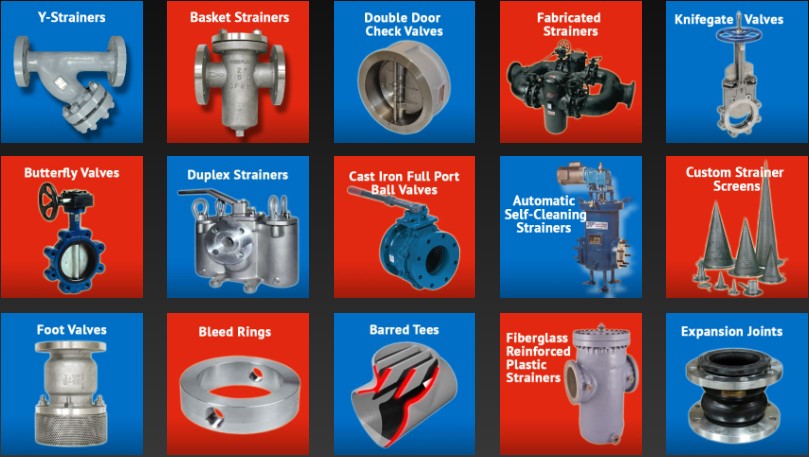Both Y strainers and basket strainers perform the same job. They protect your system by removing unwanted debris. But how they do it, and where they fit best, is very difficult.
Y strainers are smaller in size. They are used in systems with high pressure, like steam lines or gas setups. They work well in tight spaces and are usually placed where debris level is low.
Basket strainers, on the other hand, are built for high flow. They have a larger screen area and can hold more debris. This makes them perfect for industrial applications and fluid systems with larger particles.
Cleaning is easier with basket strainers, particularly duplex basket strainers, that work without stopping the process.
The flow type, pressure, and frequency are the major difference. Choosing the right one can result in more efficiency and less shutdowns.
Knowing the Key Differences Between Y strainers and basket strainers
When dealing with fluid systems, the tiniest components matter. Strainers may not be the flashiest parts, but they accomplish quite a bit in the background.
Basket strainers and Y strainers, the two most popular types, are often mixed up. Both catch debris, however, how they accomplish this and the place where they will work the best is where things differ. Some installations require small, high-pressure systems. Others need something that handles high flow without slowing things down.
Understanding the difference helps avoid the wrong pick, i.e., clogs, downtime, or extra work no one wants.
What is a Y Strainer?
A Y strainer is shaped like the letter “Y” and is often used in steam systems or gas applications. It handles high pressure and high temperature better than most. These strainers are lightweight and can be mounted horizontally or vertically.
They are equipped with screens which capture larger particles and protect valves, pumps, and regulators. Through effective, cleaning, Y strainers require system shutdown, especially if they are not fitted with a blow-off valve.
Y strainer manufacturers often offer them in materials, like cast iron or stainless steel depending on the system’s needs.
What is a Basket Strainer?
Basket strainers are bigger and feature the shape of a basket to filter the fluid. They are perfect for oil, water treatment, or other types of fluid systems where high flow is required.
They are easier to clean. Just remove the cover and lift out the basket. There is no need to shut off the system in all cases, particularly for duplex basket strainers that permit the flow to divert during maintenance.
Fabricated basket strainers are usually made for industrial applications, particularly within Canada as well as the U.S., where large factories require reliable filtration without interrupting the operation.
Comparing Y-Strainer Vs. Basket Strainer
- Design: The major difference between the two lies in shape and size. Y strainers are compact. They require less space and weigh less. That makes them good for tight areas.
Basket strainers, especially fabricated simplex basket strainers, are bulkier. They offer a bigger filtration element, which means they capture more debris before cleaning is needed.
Y strainers are better for intermittent flow and gases. Basket strainers are better for steady, high-flow liquids with solid particles. Choosing the wrong type can cause unnecessary pressure drops or frequent filter changes.
- Pressure and Flow Rate: Systems with high pressure and low solids often use Y strainers. Their screens are smaller and do not cause much pressure drop. That’s perfect for steam and compressed air lines.
In contrast, fabricated basket strainers are better for handling high pressure with higher debris levels. They hold more dirt and don’t need cleaning as often.
When deciding between the two, look at system flow rate. If flow is steady and volume is large, go with simplex basket strainers or duplex basket strainers.
- Cleaning and Maintenance Needs: Strainers are designed to be removed and cleaned but how often that is needed depends on your choice.
Y strainers usually require a shut-off during cleaning unless they have a blow-down valve. This can be a hassle in busy facilities.
Basket strainers make cleaning easier. The cover comes off, and the basket lifts out. In duplex basket strainers, there are two baskets – one keeps working while the other is being cleaned. That is a big plus for systems that can’t stop.
- Material Choices and Durability: Both strainers are available in cast iron, stainless steel and various other materials. The choice you make must depend on the type of fluid and the temperature at which it operates.
Stainless steel is resistant to corrosion. That’s best for chemicals and water treatment. Cast iron is suitable or low-cost projects such as HVAC and irrigation.
Fabricated basket strainers are typically designed and manufactured from stainless steel for more durability and strength in tough weather conditions.
Y strainer manufacturers or suppliers can help you with the right material match that makes a big difference in durability and safety.
Best Applications for Each Strainer
Go for a y strainer when you are working with steam systems, compressed air, or gas lines. These setups usually involve high pressure, and Y strainers can handle that without a problem.
They are also a smart choice when space is limited. Their compact design fits easily into tight areas without making installation complicated.
If your system manages little small debris from time to time, a Y strainer can do the job efficiently without overdoing it.
On the other hand, if you are dealing with industrial applications, think of fluid systems that have continuous flow and larger particles, a basket strainer is a better choice. They are built to manage high flow and are much easier to clean. No system shutdowns, no long waits.
Simplex basket strainers are great when cleaning isn’t needed often. But if your setup runs non-stop, duplex basket strainers let you clean one side while the other keeps working. Smart, simple, and less downtime.
Final Thought
Choosing between a Y strainer and a basket strainer is not just about shape. It’s about what your system needs.
Strainers are ideal for protecting equipment. But using the wrong one increases maintenance and reduces efficiency. Think about pressure, flow rate, space, and how often cleaning is possible.
If you’re filtering liquids with larger particles or handling high pressures, fabricated basket strainers are a smart choice. For steam systems or smaller setups, Y strainers get the job done.
Do not hesitate to ask questions prior to installing. This one thing will save you time, money, and lots of system-related issues.






